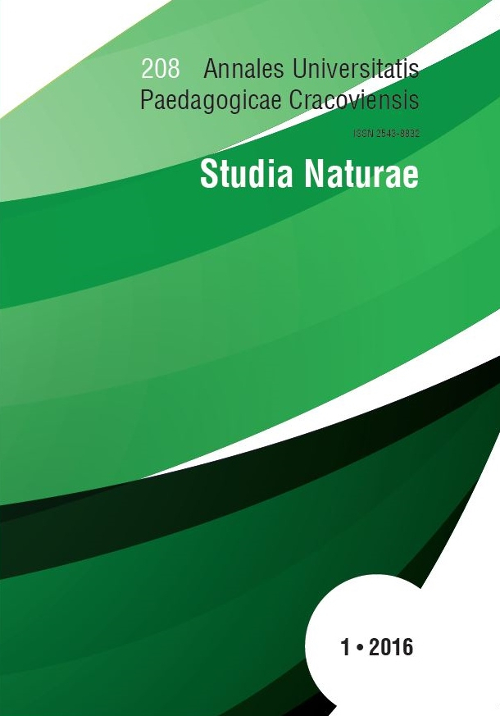Orchid diversity at Cuetzalan del Progreso, Puebla, Mexico – anthropogenic threats and potential for organic production for conservation purposes
Keywords:
anthropogenic factors, biodiversity, conservation, Cuetzalan del Progreso, Mexico, orchidAbstract
The orchid flora of Puebla State represents 16% of the total species present in Mexico demonstrating rich biodiversity. However, several municipalities in the north-east of Puebla area are located within a conservation priority area for its tropical montane cloud forest and tropical rain forest due to decision of the Comisión Nacional para el Conocimiento y el Uso de la Biodiversidad of Mexico. We have recorded 93 species from Cuetzalan del Progreso with 25 new records of the flora of the state. These new dditions thereby currently increase the orchid flora of Puebla to 197 species. Of these, six species are classified as threatened, three as subject to special protection by the NOM-059-SEMARNAT-2010 and one classified as least concern by the International Union for the Conservation of Nature. Moreover, we recorded 37 species illegally traded in “tianguis” (informal markets) of Cuetzalan del Progreso. The orchid diversity in the fragmented forests can be harnessed in establishing a model for the sustainable management and to promote conservation action f species at some level of threat and in the restoration of areas with fragmented forests. Unfortunately, the orchid diversity has been seriously endangered by several anthropogenic factors. We have also recorded significant anthropogenic threats in this municipality for the long-term existence of the local orchid members and species with potential for commercial production. A viable approach will be to allow the introduction of in vitro germination program and organic production of orchids by local and fringe communities; this will reduce inhabitants’ dependence on the scarce forest resources, lessen illegal harvesting and trafficking of wild orchids, and at the same time provide economic development for the local communities.
Downloads
Metrics
References
Arriaga, L., Espinoza, J.M., Aguilar, C., Martínez, E., Gómez, L., Loa, E. (2000). Regiones terrestres prioritarias de México. Comisión Nacional para el Conocimiento y uso de la Biodiversidad. Conabio, México. http://www.conabio.gob.mx/conocimiento/regionalizacion/doctos/Tmapa.html. [In Spanish]
Barragán, S. (2013). Mercado negro hace negocio con las orquídeas. http://www.unionpuebla.mx/articulo/2013/10/04/empresas/puebla/mercado-negro-hace-negocio-con-las-orquideas. [In Spanish]
Conabio (2008). Red Mundial de información sobre biodiversidad (Remib). http://www.conabio.gob.mx/remib/doctos/remibnodosdb.html?. [In Spanish]
Cetzal-Ix, W., Alvarez-Mora, R., Basu, S.K., Cosme-Pérez, J., Noguera-Savelli, E. (2014). Orchid fruit diversity at Puebla Mexico: A new insight into the biodiversity of a fragmented ecosystem with need for conservation and potential for horticultural exploitations in future. In: D. Nandwani (ed.), Sustainable Horticultural Systems, Sustainable Development and Biodiversity 2. Switzerland: Springer. https://doi.org/10.1007/978-3-319-06904-3_9
Espejo-Serna, A., López-Ferrari, A.R. (1998a). Las monocotiledóneas mexicanas, una sinopsis florística. 1. Lista de Referencia. Parte VII. Orchidaceae I. México, D.F., México: Consejo Nacional de la Flora de México, Universidad Autónoma Metropolitana y Comisión Nacional para el Conocimiento y Uso de la Biodiversidad. [In Spanish]
Espejo-Serna, A., López-Ferrari, A.R. (1998b). Las monocotiledóneas mexicanas, una sinopsis florística. 1. Lista de Referencia. Parte VIII. Orchidaceae II. México, D.F., México: Consejo Nacional de la Flora de México, Universidad Autónoma Metropolitana y Comisión Nacional para el Conocimiento y Uso de la Biodiversidad. [In Spanish]
Free Relief Layers for Google Maps (2013). Shaded relief mashup of the world for google maps. http://www.maps-for-free.com
Hágsater, E., Soto-Arenas, M.A. (2003). Icones Orchidacearum Fascicle 5 & 6, Orchids of Mexico Part 2 & 3. México, D.F., Mexico: Herbario AMO. http://www.herbarioamo.org/index_archivos/Fascicles5&6.pdf
Hágsater, E., Soto-Arenas, M.A. (2008). Icones Orchidacearum Fascicle 10, Orchids of Mexico Part 4. México, D.F., Mexico: Herbario AMO. http://www.herbarioamo.org/index_archivos/Fascicle10.pdf
Hegland, S.J., Nielsen, A., Lazaro, A., Bjerknes, A.L., Totland, Ø. (2009). How does climate warming affect plant-pollinator interactions? Ecology Letters, 12, 184–195. https://doi.org/10.1111/j.1461-0248.2008.01269.x
Instituto Nacional de Estadística, Geografía e Informática (1985). Cuetzalan del Progreso, estado de Puebla: cuaderno estadístico municipal. Aguascalientes, México: Instituto Nacional de Estadística y Geografía. [In Spanish]
Instituto Nacional de Estadística, Geografía e Informática (1987). Síntesis geográfica, nomenclátor y anexo cartográfico. Aguascalientes, México: Instituto Nacional de Estadística y Geografía. [In Spanish]
Instituto Nacional de Estadística, Geografía e Informática (2009). Prontuario de información geográfica municipal de los Estados Unidos Mexicanos. Cuetzalan del Progreso, Puebla. Clave geoestadística 21043. http://www.inegi.org.mx/default.aspx. [In Spanish]
Islas, L. (2014). Mafia de las orquídeas "azota" Puebla. http://www.unionpuebla.mx/articulo/2014/03/24/medio-ambiente/mafia-de-las-orquideas-azota-puebla [In Spanish]
IUCN Red List (2016). Guidelines for using the IUCN Red List categories and criteria: Version 10. Prepared by the Standards and Petitions Subcommittee in February 2016. http://intranet.iucn.org/webfiles/doc/SSC/RedList/RedListGuidelines.pdf
Morrone, J.J. (2001). Biogeografía de América Latina y el Caribe. M&T-Manuales & Tesis SEA, 3. Zaragoza, Spain: Gorfisa. http://www.bio-nica.info/biblioteca/Morrone2001Caribe.pdf. [In Spanish]
Pérez-Bravo, R., Salazar, G.A., Mora-Guzmán, E. (2010). Orquídeas de Las Lomas-La Manzanilla, Sierra Madre Oriental, Puebla, México. Boletín de la Sociedad Botánica de México, 87, 125–129. [In Spanish]
Romero-Giordano, C. (2000). Orquídeas de la Sierra Norte de Puebla. In: M. Sarmiento-Fradera, C. Romero-Giordano (eds.), Orquídeas mexicanas. México, D.F.: Editorial Porrúa, 129–144. [In Spanish]
Semarnat (2010). Norma Oficial Mexicana NOM-059-SEMARNAT-2010, Protección ambiental – Especies nativas de México de flora y fauna silvestres – Categorías de riesgo y especificaciones para su inclusión, exclusión o cambio. – Lista de especies en riesgo. Diario Oficial de la Federación, 2ª Sección, 30 de diciembre de 2010. Secretaría de Medio Ambiente y Recursos Naturales, México. http://www.profepa.gob.mx/innovaportal/file/435/1/NOM_059_SEMARNAT_2010.pdf. [In Spanish]
Solano-Gómez, R. (1993). El género Stelis Sw. (Orchidaceae: Pleurothallidinae) en México. Orquídea (México City), 13, 1–112. [In Spanish]
Soto-Arenas, M.A. (1988). Listado actualizado de las orquídeas de México. Orquídea (México City), 11, 233–277. [In Spanish]
Soto-Arenas, M.A., Hágsater, E., Jiménez, R., Salazar, G.A., Solano, R., Flores, R., Contreras, I. (2007). Las Orquídeas de México: Catálogo Digital. Instituto Chinoín, A.C., México, D.F. http://www.herbarioamo.org/index_archivos/Page492.htm. [In Spanish]
UN1ÓN (2013). Puebla, quinto en decomiso de especies protegidas. http://www.unionpuebla.mx/articulo/2013/10/02/medio-ambiente/puebla-quinto-en-decomiso-de-especies-protegidas. [In Spanish]

